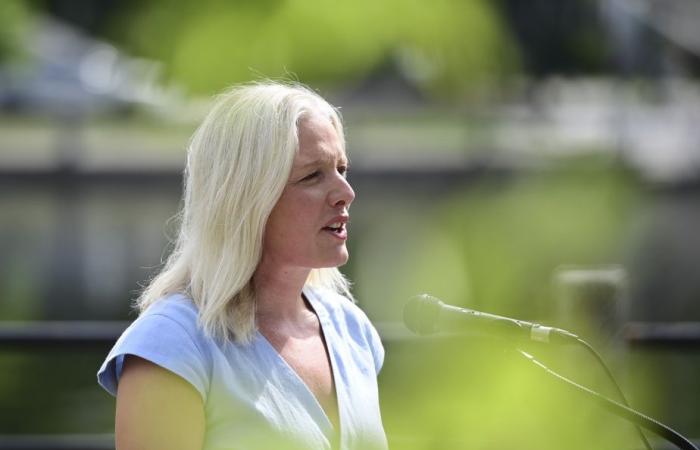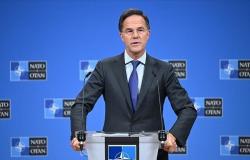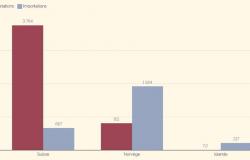Where will the colossal sums needed to fight climate change come from, particularly for developing countries?
Published yesterday at 1:14 p.m.
Ian Bickis
The Canadian Press
The UN climate conference that concluded this week emphasized the need to push governments to invest more, but, as evidenced by the wave of criticism over weak financing commitments, alternatives are also needed.
“There is simply not enough money coming from government sources,” laments Catherine McKenna, executive director of Climate and Nature Solutions and former federal environment minister.
To help close this substantial gap, there is growing pressure to use so-called blended finance, which uses public funds to provide some financial support to a project so that the private sector has a reason to invest.
“We have to be creative to find the right incentives to make this happen,” says Mme McKenna.
PHOTO SEAN KILPATRICK, CANADIAN PRESS ARCHIVES
Catherine McKenna, CEO of Climate and Nature Solutions and former federal environment minister
This model is particularly needed in developing countries, where risks are higher and business cases are more difficult to establish.
To fill this gap, FinDev Canada announced the creation of a blended financing platform just as COP29 opened. In partnership with Mitsubishi Financial Group and backed by an investment from the Green Climate Fund, the platform has set a funding target of 1.5 billion to help up to 25 developing countries.
This initiative aims to continue Canada’s previous smaller-scale efforts using blended finance. One example of these efforts is a partnership that helped pioneer green energy in Uzbekistan.
In 2020, Canada provided US$17.5 million in financing at below-market rates, alongside other organizations, to help launch a US$100 million solar project – the first in Uzbekistan.
Once that hurdle was overcome, one of the co-investors then helped launch a second solar project twice as large and with fewer concessions. Soon after, a wind power project was launched without any cost-reduction funding.
The funding model is meant to help deliver these difficult first projects to pave the way for other projects to come, says Nnamdi Igbokwe, director of thought leadership at Convergence.
“This is why blended finance has become so important, because it is a mechanism that allows the mobilization of the private sector in a way that would otherwise be virtually excluded. »
Convergence, a Toronto-based group focused on increasing the use of blended finance, found that the model was used for $18.3 billion in climate financing last year, up from $8 billion a year earlier .
Importantly, the total included six deals worth more than $1 billion each.
“We’re starting to see a smarter, more efficient use of catalytic capital, where multibillion-dollar deals become a more consistent thing,” Mr. Igbokwe says.
That’s important because to chip away at billions of dollars in global funding targets requires a steady stream of multi-trillion-dollar deals, he adds.







